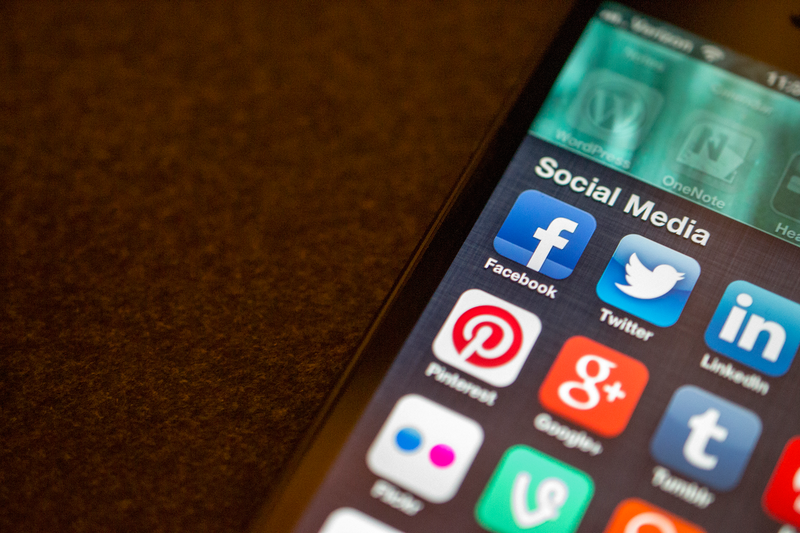Send, Post, Like, Comment
What Social Media Is Doing For Us Today
Jason Howe, fair use via Wikimedia Commons
These are just some of the social media icons that can be found on most phones and websites today. With just a click, social media can be used for positive as well as hurtful means.
As a teen, you’ve probably heard the statement “Social media is taking over your life” at least once from an adult. And it certainly may not seem that way, even as you spend anywhere from ten minutes to five (yes, five) hours scrolling through your friends’ stories, posts, and messages.
Over the past decade, social media—or a social networking site, as it’s more formally known—has entered people’s lives somewhat like an explosion. Apps and sites like Instagram and Snapchat are common with high-school aged students, while adults tend to use Facebook and Twitter. Now, that doesn’t mean adults are opposed to using other apps as well. This fact of preference may have to do with the complexity of each site, and what is age-relevant.
But with every “explosion” in our society, there comes a list of pros and cons. Used in moderation, social media can be very powerful. In the wrong hands, it could be dangerous.
Probably the most obvious and positive reason for social media usage is instant communication. If you want to talk to someone across the country, that’s possible with the click of a few buttons. On vacation and you want to ask for homework? Just ask your friend to snap you a picture of the work for that night. It’s as easy as that.
Unfortunately, the simplicity of being able to reach someone doesn’t always work in our favor. Cyber-bullying and cyber-stalking are all too common with the amount of media sites that are available today. Just because you hit “Block” doesn’t mean that person can’t reach you.
Aside from communication, we use media as a way to stay in the know, if you will. We have the need to see what’s going on in our friends’ lives, good or bad.
According to Lifewire.com, humans “are naturally social creatures, and…it’s often quite satisfying to see comments and likes show up.” We want to share our experiences with everyone close to us as soon as possible and see those likes roll in.
Who doesn’t want to see their best friend’s recent vacation to Aruba? What about that state championship your high school just won, complete with the captain hoisted up on everyone’s shoulders? And no one wants to miss that one picture of that power couple on a date for their one year anniversary.
Social media sites like Instagram are designed to give us push notifications every time we get a like or comment. However, the notifications are staggered. We may have received ten likes every hour for the past three hours, but the website is designed to show you thirty likes after three hours.
This staggering of notifications isn’t a coincidence. The designers of these apps and sites control what you see on purpose, to get you sucked in.
Even though you had to wait three hours, seeing thirty likes is a whole lot more rewarding to us than seeing only ten. The American Marketing Association states that “Often, if you have the earliest predictor of a reward—a sign of a social media alert, like your phone buzzing—you get a rush of dopamine from that condition stimulus.” Dopamine is the chemical our brain releases whenever we receive or expect a reward…such as likes and comments.
This infatuation with being the “top dog” on social media certainly hasn’t slowed down. With more apps and sites becoming available to us every day, it’s our distraction from the rest of the world.
Essentially, it’s all a mental game. You get the likes and followers, you get the higher status. So we keep playing the game, no matter what. After all, we want to win.

Maria Wood is a member of the Class of 2022. This is her third year on the Green Wave Gazette since she joined as a freshman. During March of her sophomore...


